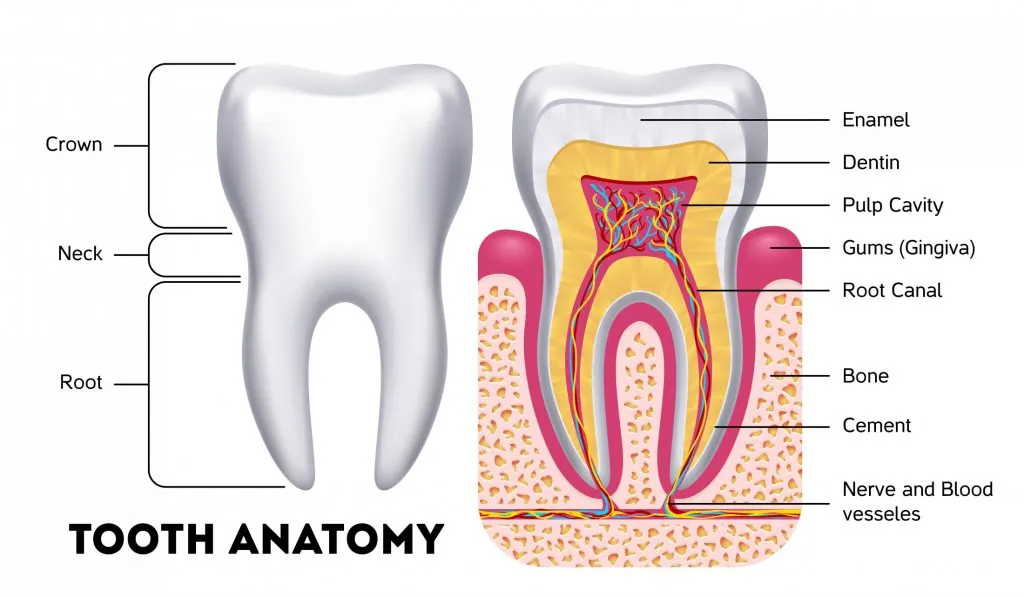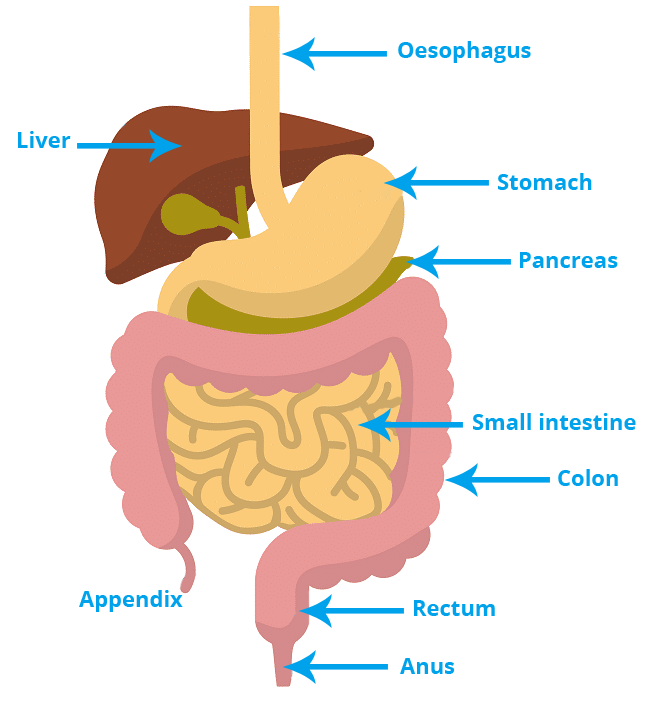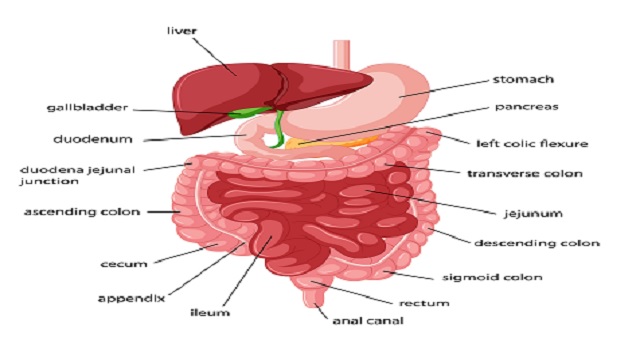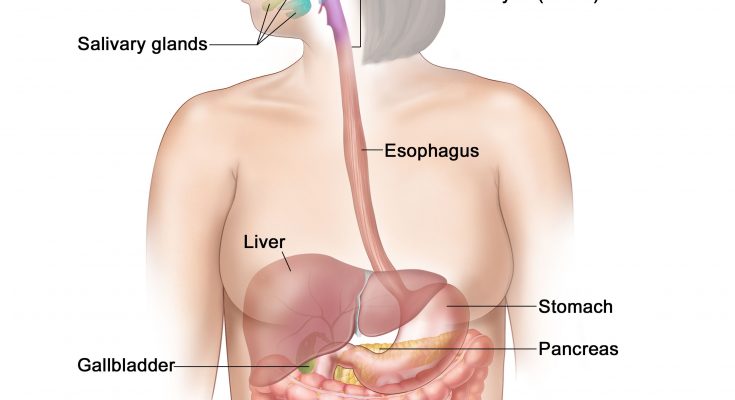Accessory Organs of the Alimentary Canal
Digestive Organs Other than the intestines and the stomach, the following are also part of the digestive system:
Teeth
The role the teeth play in food processing needs little introduction; we masticate, or chew, by opening and closing our jaws and moving them from side to side while continuously using our tongue to move the food between our teeth.
-
Function. The teeth tear and grind the food, breaking it down into smaller fragments.
-
Deciduous teeth. The first set of teeth is the deciduous teeth, also called baby teeth or milk teeth, and they begin to erupt around 6 months, and a baby has a full set (20 teeth) by the age of 2 years.
-
Permanent teeth. As the second set of teeth, the deeper permanent teeth, enlarge and develop, the roots of the milk teeth are reabsorbed, and between the ages of 6 to 12 years they loosen and fall out.
-
Incisors. The chisel-shaped incisors are adapted for cutting.
-
Canines. The fang like canines are for tearing and piercing.
-
Premolars and molars. Premolars (bicuspids) and molars have broad crowns with round cusps ( tips) and are best suited for grinding
-
Crown. The enamel-covered crown is the exposed part of the tooth above the gingiva or gum
-
Enamel. Enamel is the hardest substance in the body and is fairly brittle because it is heavily mineralized with calcium salts.
-
Root. The outer surface of the root is covered by a substance called cementum, which attaches the tooth to the periodontal membrane (ligament).
-
Dentin. Dentin, a bonelike material, underlies the enamel and forms the bulk of the tooth.
-
Pulp cavity. It surrounds a central pulp cavity, which contains a number of structures (connective tissue, blood vessels, and nerve fibers) collectively called the pulp.
-
Root canal. Where the pulp cavity extends into the root, it becomes the root canal, which provides a route for blood vessels, nerves, and other pulp structures to enter the pulp cavity of the tooth.

Salivary Glands
Three pairs of salivary glands empty their secretions into the mouth.
-
Parotid glands. The large parotid glands lie anterior to the ears and empty their secretions into the mouth.
-
Submandibular and sublingual glands. The submandibular and sublingual glands empty their secretions into the floor of the mouth through tiny ducts
-
Saliva. The product of the salivary glands, saliva, is a mixture of mucus and serous fluids.
-
Salivary amylase. The clear serous portion contains an enzyme, salivary amylase, in a bicarbonate-rich juice that begins the process of starch digestion in the mouth. Pancreas Only the pancreas produces enzymes that break down all categories of digestible foods.
-
Location. The pancreas is a soft, pink triangular gland that extends across the abdomen from the spleen to the duodenum; but most of the pancreas lies posterior to the parietal peritoneum, hence its location is referred to as retroperitoneal.
-
Pancreatic enzymes. The pancreatic enzymes are secreted into the duodenum in an alkaline fluid that neutralizes the acidic chyme coming in from the stomach.
-
Endocrine function. The pancreas also has an endocrine function; it produces hormones insulin and glucagon. Liver The liver is the largest gland in the body.
-
Location. Located under the diaphragm, more to the right side of the body, it overlies and almost completely covers the stomach.
-
Falciform ligament. The liver has four lobes and is suspended from the diaphragm and abdominal wall by a delicate mesentery cord, the falciform ligament.
-
Function. The liver’s digestive function is to produce bile.
-
Bile. Bile is a yellow-to-green, watery solution containing bile salts, bile pigments, cholesterol, phospholipids, and a variety of electrolytes.
-
Bile salts. Bile does not contain enzymes but its bile salts emulsify fats by physically breaking large fat globules into smaller ones, thus providing more surface area for the fat-digesting enzymes to work on.
Gallbladder
While in the gallbladder, bile is concentrated by the removal of water.
-
Location. The gallbladder is a small, thin-walled green sac that snuggles in a shallow fossa in the inferior surface of the liver.
-
Cystic duct. When food digestion is not occurring, bile backs up the cystic duct and enters the gallbladder to be stored.
More on AmplifyGlobe
Introduction to Digestive System
 Digestion is the process by which food molecules are broken down into various sm Read More
Digestion is the process by which food molecules are broken down into various sm Read More
Organs of The Alimentary Canal
 The alimentary canal (also called the digestive tract) is a long tube of organs Read More
The alimentary canal (also called the digestive tract) is a long tube of organs Read More
Process of Digestion
 The digestive system converts the foods we eat into their simplest forms, like g Read More
The digestive system converts the foods we eat into their simplest forms, like g Read More